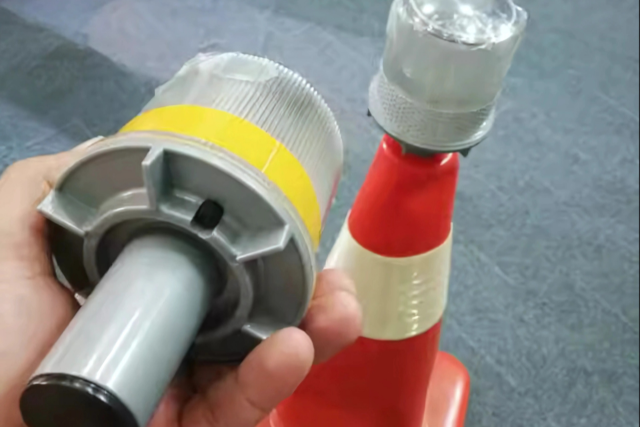
Solar lights are an eco-friendly and cost-effective way to illuminate your outdoor spaces. To ensure they continue to work efficiently and last as long as possible, regular maintenance is essential. In this guide, we’ll share valuable tips on how to clean and maintain your solar lights, keeping them bright and effective for years to come.
1. Regular Cleaning of Solar Panels
The most crucial part of a solar light is its solar panel, which captures sunlight to power the light. Over time, dust, dirt, and debris can accumulate on the panel, reducing its efficiency and charging capabilities. To maintain optimal performance:
- Use a Soft Cloth or Sponge: Gently wipe the solar panel with a damp cloth or sponge. Avoid abrasive materials, as they may scratch the panel.
- Clean Every 1-2 Months: Depending on your location, clean the panels every month or two, especially if you live in a dusty or humid area.
- Rinse with Water: If the panel is particularly dirty, rinse it with water to remove grime before drying it with a soft cloth.
2. Check and Replace the Batteries
Solar lights rely on rechargeable batteries to store energy. If the light isn’t shining brightly, or if it’s dimming too quickly, the battery might need replacing.
- Inspect Battery Health: Open the light to check the battery. If it looks corroded or doesn’t hold a charge, it’s time for a replacement.
- Use High-Quality Batteries: Opt for rechargeable NiMH (Nickel-Metal Hydride) batteries, as they are more efficient and environmentally friendly than older NiCad batteries.
- Replace Annually: In general, solar batteries last 1-2 years. If your lights are not functioning as they should, it’s time to swap the batteries.
3. Keep the Light Fixtures Clean
The fixtures of your solar lights can accumulate dirt, algae, or moss over time, which can impact the light’s performance. To keep your lights looking their best:
- Wipe the Fixtures: Use a damp cloth or sponge to wipe down the fixtures, removing dirt or algae that could block the light.
- Check for Obstructions: Ensure that there are no plants or objects blocking the light’s path. Overgrown bushes or branches can reduce the amount of sunlight the panel receives.
4. Ensure Proper Placement for Maximum Sunlight Exposure
For solar lights to charge effectively, they need to be placed in a location that receives full sunlight for several hours a day. Here’s how to ensure proper placement:
- Adjust the Position: If your solar lights are not performing well, try moving them to an area that receives more sunlight during the day.
- Clear Obstructions: Trim any trees, bushes, or structures that may block the sunlight from reaching the solar panels.
- Position for Optimal Angle: Place lights where the panels face the sun directly, ideally at an angle where they receive maximum sunlight exposure.
5. Inspect the Wiring and Connections
If your solar lights are not working at all, there may be an issue with the internal wiring or connections. Regularly inspect the light for any exposed or broken wires, and address any issues immediately.
- Check for Damage: Look for any visible signs of wear, such as frayed wires or rusted connections.
- Ensure Secure Connections: Ensure all connections are tight and free from corrosion. If you notice any issues, replace the damaged parts or consult a professional for repairs.
6. Prepare for Harsh Weather Conditions
Solar lights are designed to withstand outdoor conditions, but extreme weather can affect their performance. Here are some ways to protect your lights:
- Winter Care: If you live in an area with harsh winters, consider removing the solar lights and storing them indoors during the off-season. This helps prevent damage from snow, ice, or freezing temperatures.
- Waterproofing: Ensure your solar lights are rated as waterproof, especially if they’re exposed to rain or humidity. If needed, apply a sealant around joints to prevent moisture damage.
7. Seasonal Maintenance
To keep your solar lights running smoothly year-round, consider doing a more thorough inspection at the start of each season.
- Before Summer: Ensure the solar panels are clean, batteries are charged, and the lights are positioned correctly for maximum sun exposure.
- Before Winter: Check that the fixtures are still functioning and clear of any debris, and store the lights away if needed to prevent winter damage.
Conclusion
Maintaining your solar lights is essential for keeping them in peak condition, ensuring longevity and efficiency. Regular cleaning, battery maintenance, and proper placement can make a significant difference in the performance and lifespan of your lights. With these simple tips, your solar lights will continue to illuminate your outdoor spaces for years to come, while providing an eco-friendly and cost-effective solution to outdoor lighting.
Explore our high-quality solar lights designed for all your outdoor lighting needs.
Contact Us